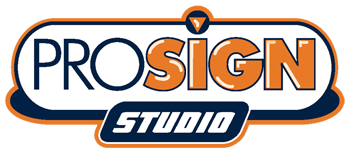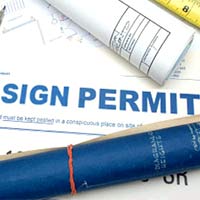WHO…WHAT…WHERE…WHEN?
STEP 1: WHO…Who is the sign for?
Most commercial businesses and organizations all fall under the same restrictions within the same city. However,
sometimes there are different rules or guidelines for places like schools, churches, farms or other agricultural
organizations. In order to research the requirements for your sign, we need your business or organization name,
and the name of the property and/or building owner, especially if you are renting/leasing.
STEP 2: WHAT…What kind of sign do you want or need?
There are many classifications of signs; Ground mount, wall mount, pole mount, lighted or non-lit, internally
illuminated or externally illuminated, etc… Most larger towns and cities have a well-defined sign code to determine
what kind of sign is or is not allowed. Look around at other signs in your area and see if you can an example
you like – if you can’t an example, this can be an indication that type of sign may not be allowed in your area.
Also, “what size “ is also very important as most towns have limitations on size or square footage of the sign.
STEP 3: WHERE…Where will the sign be installed?
The address of where the sign needs to go is perhaps the most important piece of information we require to get
started. Every city has a different sign code with rules and restrictions that must be followed. Often times the
city has different regulations that allow certain kinds of signs in one area, but not in another. Placement is another
concern we have to research. Is it near the road, up high, extending o� the building, etc. Sometimes, we may
a particular type of sign is allowable on the back or side of the building, but not on the front. Knowing the exact
address and other details allows us to make sure what we recommend will work for your location.
STEP 4: WHEN…When does the sign need to be completed, and is there enough time to get it all done?
It never fails, someone says their new business opens next week but they still need to get a sign up. Most times,
we tell our customers that permits can take anywhere from 3-6 weeks, but sometimes more depending on which
municipality we have to deal with. We have had some permits that require months to get approved based on
where the permit is being pulled and what all is involved. Then, and only then, can we proceed with actual
fabrication or building the sign.
In closing, most of the larger cities in Central Ohio have very detailed sign code(s) that clearly define the type(s) of
signs that are allowed and also help minimize liability to themselves. As such, more work and responsibility falls
on the shoulders of the sign maker to ensure the sign is designed correctly, and is allowed at the location requested.
Prosign Studio offers professional consulation and will help you get your sign approved and ready to install.

